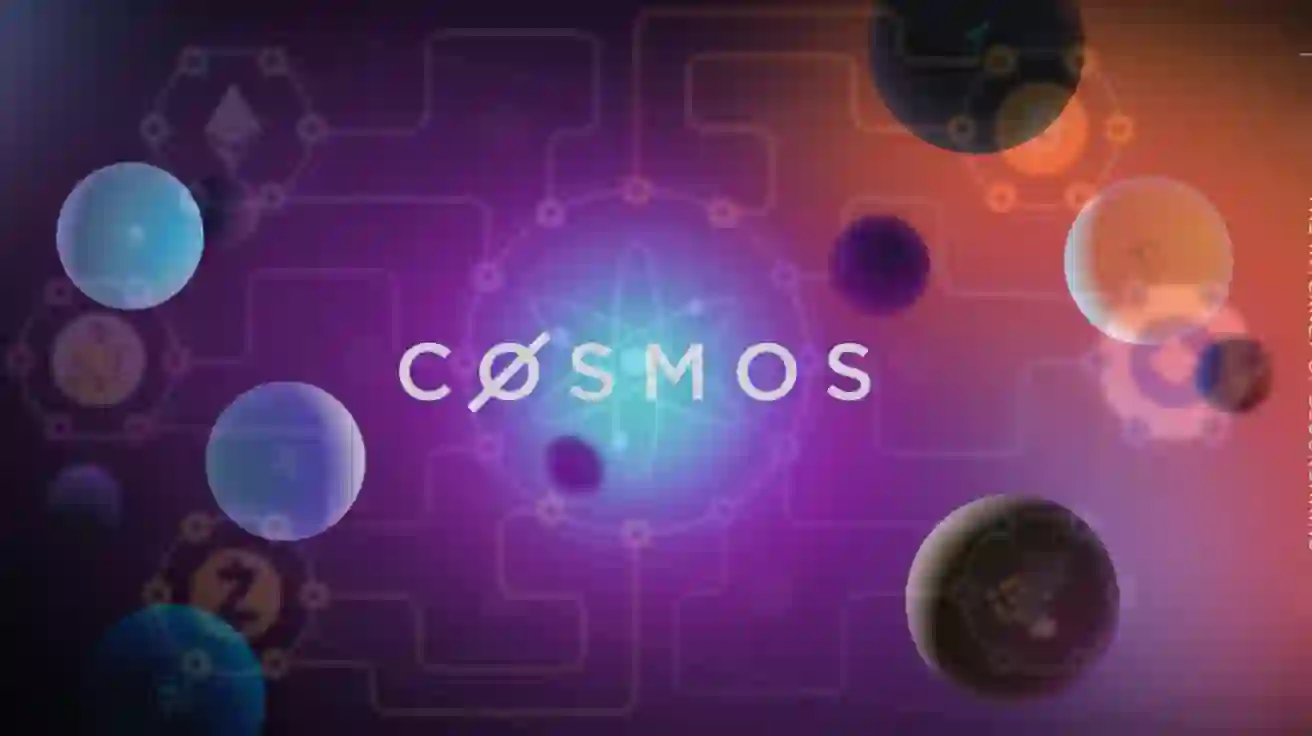Introduction to Cosmos
Cosmos is a blockchain network designed to create an interconnected ecosystem where multiple blockchains can communicate, share data, and conduct transactions seamlessly. Dubbed the “Internet of Blockchains,” Cosmos aims to solve one of the biggest limitations in the blockchain industry—interoperability. Unlike conventional blockchains that operate in isolation, Cosmos facilitates cross-chain communication, reducing the need for direct competition among blockchain networks.
By enabling seamless interaction between blockchains, Cosmos fosters an environment where specialized blockchains can thrive without having to dominate or outcompete one another. Additionally, it streamlines the blockchain development process, making it easier for developers to create customized blockchains in significantly less time.
The Vision Behind Cosmos
Cosmos introduces a revolutionary framework that prevents blockchain fragmentation by allowing different networks to operate cohesively. Instead of competing to be the dominant blockchain, various networks can utilize Cosmos to complement one another, enabling more efficient and diverse applications.
A unique feature of Cosmos is its approach to development. By offering a modular framework, developers can create purpose-built blockchains tailored for specific applications in a fraction of the time typically required. The combination of an easy development process and cross-chain connectivity sets Cosmos apart from other blockchain projects.
Did You Know?
To showcase its capabilities, Cosmos developers created Ethermint, a replica of Ethereum that operates within the Cosmos ecosystem. It supports Ethereum-based smart contracts and tools such as MetaMask, demonstrating Cosmos’ versatility.
The Origins of Cosmos
Cosmos is built on Tendermint, a consensus protocol developed by Jae Kwon in 2014. He later teamed up with Zarko Milosevic and Ethan Buchman to develop a fully interoperable blockchain ecosystem. However, Kwon stepped down from his leadership role in 2020, leaving the project’s future in the hands of a broader development community.
Key Milestones in Cosmos’ Development
- April 2017 – Raised $17 million within the first 29 minutes of its initial token sale.
- December 2018 – Launched Game of Stakes, the first large-scale test of the Cosmos network.
- March 2019 – Official launch of the Cosmos mainnet.
- November 2019 – Kava Labs became one of the first projects built using Cosmos SDK.
- February 2020 – Founder Jae Kwon stepped down, leading to internal restructuring.
- September 2020 – Cosmos partnered with Nym to enhance privacy credentials within its ecosystem.
- February 2021 – Released the Stargate upgrade, featuring the Inter-Blockchain Communication (IBC) protocol.
What Makes Cosmos Unique?
Cosmos competes with projects like Polkadot in creating an interoperable blockchain network. However, while Polkadot centralizes its security across all connected blockchains, Cosmos allows each blockchain to maintain its independence. This means that each blockchain within the Cosmos network must secure itself, manage its own governance, and run its own validators.
Core Technologies of Cosmos
- Tendermint – A consensus mechanism that enables the creation of scalable and secure proof-of-stake blockchains.
- Cosmos SDK – A toolkit that simplifies the process of building decentralized applications (dApps) and blockchains.
- Inter-Blockchain Communication (IBC) Protocol – A system that enables different blockchains to connect and exchange data.
Did You Know?
Binance Chain, launched in March 2019, is powered by Tendermint, showcasing Cosmos’ influence in the blockchain space.
Understanding Tendermint
Tendermint is an open-source software enabling Byzantine Fault Tolerance (BFT), meaning that even if some network participants act maliciously, the system remains secure. It provides a robust consensus mechanism for various blockchains, including:
- Ethermint – A scalable blockchain that integrates Ethereum’s functionality with Cosmos’ interoperability.
- Terra – A stablecoin-focused blockchain designed for payment solutions.
- Regen Network – A marketplace for ecological assets and climate-related data.
How Blockchains Communicate in Cosmos
Cosmos employs a hub-and-zone model to facilitate communication between blockchains. Each blockchain (zone) connects to a central hub, which then allows cross-chain interactions. For example, if Bitcoin and Ethereum were to operate within Cosmos, each would have its own zone, connecting to a hub that enables transactions between them.
The Role of ATOM Tokens
ATOM is the native cryptocurrency of the Cosmos network. The initial ATOM tokens were distributed during the launch of the mainnet and allocated to early investors, the Cosmos Foundation, and core developers. New ATOM tokens are generated as rewards for validators maintaining the network.
How to Buy ATOM
ATOM is available on various cryptocurrency exchanges, including Binance, Kraken, and Poloniex. Users can acquire ATOM in two primary ways:
- Trading on an exchange – Users can trade cryptocurrencies such as Bitcoin (BTC), Tether (USDT), or Binance Coin (BNB) for ATOM.
- Staking – Investors can participate in Cosmos’ proof-of-stake mechanism by staking ATOM, either as validators or by delegating tokens to validators.
🔊 Cosmos community of validators, developers, integrators, clients, end users and $ATOM holders…Stargate is live! 🎉
Congrats to Cosmos Hub Validators and engineers for making this happen! 🎉https://t.co/ZJrEa8QIq0
Today, we enter the #Stargate ! 🚀 https://t.co/VOYsTKDKYe
— Cosmos – The Interchain ⚛️ (@cosmos) February 18, 2021
Buying ATOM on Binance (Example Guide)
- Create an account on Binance and log in.
- Deposit funds into your wallet (such as USDT, BTC, or BNB).
- Navigate to the ATOM trading page and select the ‘Market’ option.
- Enter the purchase amount and click ‘Buy ATOM.’
- Store ATOM securely in your Binance wallet or transfer it to a private wallet.
How to Use ATOM
ATOM holders can stake their tokens in the Cosmos proof-of-stake network, earning rewards in return. Validators help secure the network by verifying transactions and proposing new blocks. Users who don’t want to run a validator node can delegate their ATOM to existing validators and earn staking rewards.
dApps Built on Cosmos
Cosmos has become a hub for innovative decentralized applications (dApps) leveraging its scalability and interoperability features. Notable projects include:
- Anchor – A platform providing stable interest rates on stablecoin deposits.
- Flares – A multi-asset payment network supporting gaming and DeFi applications.
- Klever – A blockchain-based mobile wallet with integrated browsing and portfolio management features.
- Chainweaver – A wallet and smart contract development tool designed for cross-chain interoperability.
The Future of Cosmos
Cosmos operates as a decentralized network where upgrades and changes require community approval. Since its launch, the project has been evolving, with ongoing enhancements designed to expand its capabilities.
The Stargate upgrade, launched in 2021, introduced automatic upgrades, high-performance light clients, and the Inter-Blockchain Communication (IBC) protocol, marking a significant step toward Cosmos’ vision of a fully interconnected blockchain ecosystem. As developers continue to build on Cosmos, its influence in the blockchain industry is expected to grow, solidifying its role as a key player in blockchain interoperability.
Conclusion
Cosmos stands out as a pioneer in blockchain interoperability, allowing blockchains to collaborate rather than compete. By offering seamless communication, a modular development framework, and an efficient consensus mechanism, Cosmos is positioned as a fundamental building block for the future of decentralized technology. With ongoing upgrades and a rapidly expanding ecosystem, Cosmos is set to play a crucial role in shaping the next generation of blockchain innovation.



